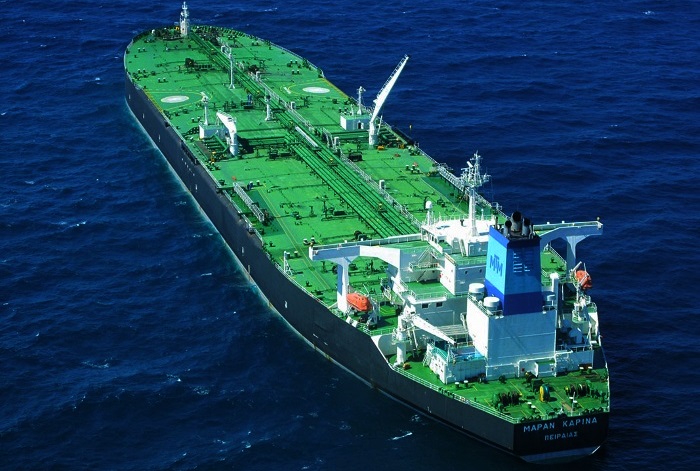Tankers: Crude Oil Flows Shifting

Higher seaborne crude oil flows are up 8.5% during the first five months of 2023, with China, the E.U. and India, all posting higher imports. In its latest weekly report, shipbroker Banchero Costa said that “2022 was a very positive year for crude oil trade, despite the surging oil prices and risks of economic recession. In the full 12 months of 2022, global crude oil loadings went up +8.7% yo-y to 2,049.8 mln tonnes, excluding all cabotage trade, according to vessels tracking data from Refinitiv. This was well above the 1,886.3 mln tonnes in Jan-Dec 2021, but slightly below the 2,110.5 mln tonnes in the same period of 2019”.

Source: Banchero Costa
“2023 so far has been even stronger: during the first 5 months of the year crude oil exports increased by +8.5% to 898.8 mln tonnes. Exports from the Arabian Gulf were up +3.2% y-o-y to 362.6 mln tonnes and accounted for 40.3% of global seaborne crude oil trade, slightly below last year 42.9% overall. Exports from Russia have been increasing as well by +6.8% y-o-y during the first 5 months of the year to 100.1 mln tonnes, or 11.1% of global trade. From the USA, exports surged by +21.5% y-o-y to 78.2 mln tonnes. From West Africa, however, exports declined -2.5% y-o-y to 70.8 mln tonnes. From S America, exports have been increasing by +22.6% y-o-y to 62.3 mln tonnes in Jan-May 2023”, the shipbroker said.
According to Banchero Costa, “in terms of demand, seaborne imports into China are up +12.9% yo-y to 206.0 mln tonnes and a 22.8% share of global imports. The European Union (27) increased by +7.3% y-o-y to 196.9 mln tonnes and a 21.8% share. Imports to India also increased by +5.3% y-o-y in the first 5 months of 2023 after a strong +11.0% increase in 2022. India has been steadily the third largest crude oil importer with an 11.0% so far in 2023. Imports into India have grown rapidly over the years, driven both by domestic demand, but also due to the establishment of a large exportoriented refining industry”.

Source: Banchero Costa
“The main source of Indian imports is still the Arabian Gulf with 46.2 mln tonnes, a share of 46.4%, but imports have been dropping -26.1% so far this year. Both Iraq and Saudi Arabia, the two largest suppliers of crude oil to India from the region, have seen their volumes dropping by -18.1% and – 13.7% respectively. The big gainer of course is Russia whose imports are spiking towards India: during the first 5 months of the year India imported 2.2 mln tonnes in 2019, 3.6 mln tonnes in 2020, 1.6 mln tonnes in 2021, 5.3 mln tonnes last year and 30.5 mln tonnes in 2023, an increase of +471.8%. Russian crude oil exports represent now a 30.6% share. With the Arabian Gulf and Russia having a combined share of 77% there is not much left for the other exporting countries. United States exports have been dropping -32.7% to 5.1 mln tonnes so far this year and US supply just 5.2% of Indian Imports in 2023. West Africa is the last major source of Indian crude oil imports with a share of 4.4%. Imports from West Africa fell -52.9% so far in 2023 to 4.4 mln tonnes vs 9.3 mln tonnes in 2022. With the larger share of imports coming from Russia also the tonnage used for imports has been changing: about 47 percent of crude oil volumes discharged in India in 2023 were carried in VLCCs, about 30 percent in Suezmaxes and 23 percent on Aframaxes. In 2022, 51 percent was in VLCC, 35 percent in Suezmaxes and 13 percent in Aframaxes”, the shipbroker concluded.
Nikos Roussanoglou, Hellenic Shipping News Worldwide
Read More: Tankers: Crude Oil Flows Shifting


